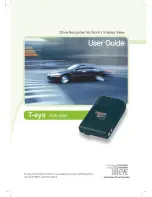
Continuous flow
of discrete
objects
No photoelectric switch is used.
Profiles are sent continuously to the PC, typically
arranged in frames of at least a few hundred lines.
The resulting image buffers in the PC can be ana‐
lyzed in a rolling buffer fashion, ensuring that all
objects are analyzed completely.
Example: Cookies.
Shorter objects
of equal length
A photoelectric switch is used.
One image per object.
Examples: Bottles, automotive parts, mobile
phones.
Longer objects of
variable size
A photoelectric switch is used.
Acquire profiles as long as the object remains in
front of the camera.
Several sub-images can be stitched together in the
PC.
Examples: Logs, fish, postal packages.
7.11.2
Triggering modes
There are different ways to trigger the camera to acquire frames and profiles. You can
use an external signal to trigger each frame or each single profile. The camera can also
be configured to acquire frames or profiles with regular time intervals, without an exter‐
nal trigger signal.
Note that when the camera acquires 2D images, a frame is the same thing as a com‐
plete 2D image. When the camera acquires 3D images, each frame is a set of profiles.
This means that the acquisition of profiles and the Line triggering concept are only
applicable for 3D images, while the 2D image triggering concept is only relevant for 2D
images.
Frame triggering
The camera will acquire frames based on an external input signal,
for example from a photoelectric switch.
The acquisition of profiles can either be free-running or triggered
by an input signal, as described in the sections
Free-running
and
Line triggering
below.
Line triggering
The camera will acquire each profile based on an external input
signal. There are two possibilities:
•
Connect an external input signal to the line trigger input of the
device.
•
Use an encoder for line triggering. In that case, pulses are
received on the encoder inputs. The distance between two
profiles is determined by the number of pulses received.
Triggering each profile from an encoder will keep the object pro‐
portions if the object motion, tracked by the encoder, changes.
Four-phase encoders also allow tracking different motion pat‐
terns,
see "Triggering using an encoder", page 33
. The motion
pattern is defined by the
EncoderOutputMode
parameter.
When you use the line trigger input, each pulse on the line trigger
input triggers one profile. Profiles are triggered when the object is
moving either backward or forward. The
EncoderOutputMode
para‐
meter is not used.
7
CONFIGURATION
32
O P E R A T I N G I N S T R U C T I O N S | Ranger3
8020774/14IM/2019-07 | SICK
Subject to change without notice
















































